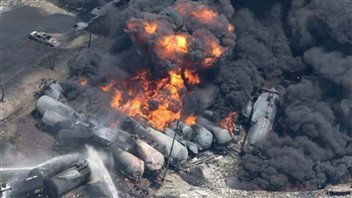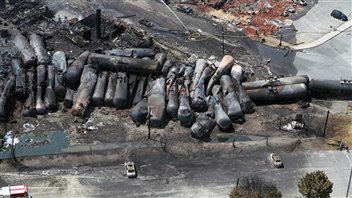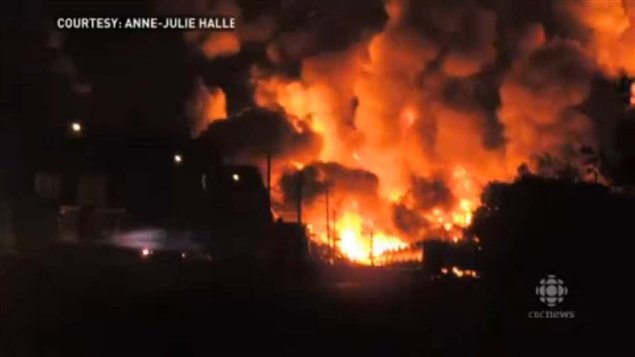With the terrible tragedy of the deadly train wreck and fire in the small Quebec town of Lac Megantic, comes many questions.

Among them, how could a train start rolling all by itself? And what about the brakes, were they set? What about rules of leaving trains unattended?
It turns out that train brakes are very complicated affairs. Regulations governing railway company safety practices are also complicated, a bit vague in some ways and the industry itself is more or less self-regulated. And even a tiny grade or slope is important when it comes to railways.
E. Wayne Benedict is in a unique position to comment. He is a lawyer with the Calgary firm, McGown-Johnson with many years experience and a focus on labour law. He also knows a great deal about regulations in the train industry, and with train operations. That’s because for many years before becoming a lawyer, he was a certified locomotive engineer and in fact still holds his ticket.
ListenBetween the town of Nantes where the train was parked, and Lac Megantic about 10 kilometers away, the track slopes a bit at a rate of just over 1 foot for every 100 ft., a grade of 1.2%. This is barely noticeable to the eye, but has an enormous effect on trains. According to Mr Benedict, it can easily start a heavy train moving. Even with the brakes set on several wagons, the enormous weight of a train on even a slight grade can start the cars down the rails.
The issue of whether the brakes were set or not, or how many, also has been raised. As mentioned, train brakes are complicated affairs
There are air brakes for the locomotive (Independent Brake), air brakes for the train (Automatic Brake), electric brakes for deceleration (Dynamic Brake), and mechanical brakes on each locomotive and car (Hand Brakes), which are applied by cranking a big wheel on each individual wagon to set the manual brakes on that wagon.
In addition, the previously mentioned Automatic Brake-for the train itself can take a varying amount of time to “recharge” between applications.”
These pneumatic (air) brakes for the entire train also operate within a small margin of pressure, a couple of p.s.i (pounds square inch) means the difference between the brakes being on or off.
In addition, over the past couple of decades, de-regulation has been the order from successive governments, allowing the rail industry to establish its own safety requirement, which has resulted in crews being reduced to just a single locomotive engineer.
In the case of the Lac Megantic situation, the train was left parked on the main line at Nantes. This is not against regulations.
Mr Benedict says, there is a siding at Nantes. To be safe, the train should have been parked there, with the derailer set at the end of siding as a final fail safe. Mr Benedict feels this was not part of regular and special instructions because of costs. It would take quite some time for the engineer to switch the line at both end and set the derailer, and set quite a few- sufficient-mechanical brakes, a time consuming process. Then for the next engineer to remove the derailer, reswitch the lines and take off the brakes.

Meanwhile Mr Benedict says, with only one person to set, or release the mechanical brakes, and working alone far from the engine on any kind of grade, should something happen to the air brakes, the train could move and the sole engineer could do nothing to stop it. He says its an “accident waiting to happen”.
As for the idea, proposed by several people that rail lines should be moved out of the city, Mr Benedict thinks that’s not practical on a number of levels. He notes that cities built themselves up around the railway, not the other way around, and that we need to ship goods, including many dangerous goods to and from the plants that produce them, which are in cities.
“Mr Benedict produced a paper in 2007 that was published in the Transportation Law Journal, which is critical of Canada’s railway safety regulatory regime. The paper was submitted to the body charged with making recommendations to government about changes to the Railway Safety Act in 2007, but Mr. Benedict notes that no effective changes to the regulatory system resulted.”
At last report 37 bodies have been recovered at the fire scene in Lac Megantic, only 9 have been identified so far.
E Wayne Benedict: Canada’s Railway Safety Regulatory Regime: Past, Present, Future
Understanding Railways and grades.







For reasons beyond our control, and for an undetermined period of time, our comment section is now closed. However, our social networks remain open to your contributions.